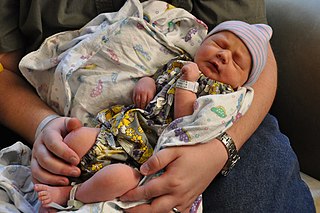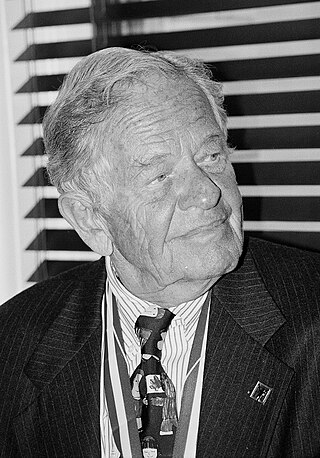
Pediatrics also spelled paediatrics, is the branch of medicine that involves the medical care of infants, children, adolescents, and young adults. In the United Kingdom, pediatrics covers many of their youth until the age of 18. The American Academy of Pediatrics recommends people seek pediatric care through the age of 21, but some pediatric subspecialists continue to care for adults up to 25. Worldwide age limits of pediatrics have been trending upward year after year. A medical doctor who specializes in this area is known as a pediatrician, or paediatrician. The word pediatrics and its cognates mean "healer of children", derived from the two Greek words: παῖς and ἰατρός. Pediatricians work in clinics, research centers, universities, general hospitals and children's hospitals, including those who practice pediatric subspecialties.

Sudden infant death syndrome (SIDS), sometimes known as cot death or crib death, is the sudden unexplained death of a child of less than one year of age. Diagnosis requires that the death remain unexplained even after a thorough autopsy and detailed death scene investigation. SIDS usually occurs during sleep. Typically death occurs between the hours of midnight and 9:00a.m. There is usually no noise or evidence of struggle. SIDS remains the leading cause of infant mortality in Western countries, constituting half of all post-neonatal deaths.

An infant or baby is the very young offspring of human beings. Infant is a formal or specialised synonym for the common term baby. The terms may also be used to refer to juveniles of other organisms. A newborn is, in colloquial use, an infant who is only hours, days, or up to one month old. In medical contexts, a newborn or neonate is an infant in the first 28 days after birth; the term applies to premature, full term, and postmature infants.
The American Academy of Pediatrics (AAP) is the largest professional association of pediatricians in the United States. It is headquartered in Itasca, Illinois, and maintains an office in Washington, D.C. The AAP has published hundreds of policy statements, ranging from advocacy issues to practice recommendations.

Thomas Berry Brazelton was an American pediatrician, author, and the developer of the Neonatal Behavioral Assessment Scale (NBAS). Brazelton hosted the cable television program What Every Baby Knows, and wrote a syndicated newspaper column. He wrote more than two hundred scholarly papers and twenty-four books.
Co-sleeping or bed sharing is a practice in which babies and young children sleep close to one or both parents, as opposed to in a separate room. Co-sleeping individuals sleep in sensory proximity to one another, where the individual senses the presence of others. This sensory proximity can either be triggered by touch, smell, taste, or noise. Therefore, the individuals can be a few centimeters away or on the other side of the room and still have an effect on the other. It is standard practice in many parts of the world, and is practiced by a significant minority in countries where cribs are also used.
William Penton Sears, also referred to as Dr. Bill, is an American pediatrician and the author or co-author of parenting books. Sears is a celebrity doctor and has been a guest on various television talk shows. Sears is a proponent of the attachment parenting philosophy and is most well known for authoring The Baby Book, which popularized that style of parenting.

Various methods of transporting children have been used in different cultures and times. These methods include baby carriages, infant car seats, portable bassinets (carrycots), strollers (pushchairs), slings, backpacks, baskets and bicycle carriers.

The Moro reflex is an infantile reflex that develops between 28 and 32 weeks of gestation and disappears at 3–6 months of age. It is a response to a sudden loss of support and involves three distinct components:
- spreading out the arms (abduction)
- pulling the arms in (adduction)
- crying (usually)

Baby colic, also known as infantile colic, is defined as episodes of crying for more than three hours a day, for more than three days a week, for three weeks in an otherwise healthy child. Often crying occurs in the evening. It typically does not result in long-term problems. The crying can result in frustration of the parents, depression following delivery, excess visits to the doctor, and child abuse.
The Ferber method, or Ferberization, is a technique invented by Richard Ferber to solve infant sleep problems. It involves "sleep-training" children to self-soothe by allowing the child to cry for a predetermined amount of time at intervals before receiving external comfort.

An infant bed is a small bed especially for infants and very young children. Infant beds are a historically recent development intended to contain a child capable of standing. The cage-like design of infant beds restricts the child to the bed. Between one and two years of age, children are able to climb out and are moved to a toddler bed to prevent an injurious fall while escaping the bed.

Swaddling is an ancient practice of wrapping infants in blankets or similar cloths so that movement of the limbs is tightly restricted. Swaddling bands were often used to further restrict the infant. Swaddling fell out of favour in the 17th century.

A bassinet, bassinette, or cradle is a bed specifically for babies from birth to about four months. Bassinets are generally designed to work with fixed legs or caster wheels, while cradles are generally designed to provide a rocking or gliding motion. Bassinets and cradles are distinguished from Moses baskets and carry cots, which are designed to be carried and sit directly on the floor or furniture. After four months, babies are often transferred to a crib or cot. In the United States, however, the bedside sleeper is the prevalent option, since they are generally bigger, recommended up to 6 months, and often used up to a year.

On Becoming Baby Wise: Giving Your Infant the Gift of Nighttime Sleep is a Christianity-based infant management book written by Gary Ezzo and pediatrician Robert Bucknam in 1993. Baby Wise presents an infant care program which the authors say will cause babies to sleep through the night beginning between seven and nine weeks of age. It emphasizes parental control of the infant's sleep, play and feeding schedule rather than allowing the baby to decide when to eat, play and sleep.
Overactive let-down (OALD) is the forceful ejection of milk from the breast during breastfeeding. In some women it occurs only with the first let-down in a feeding, occasionally women may have multiple strong letdowns during a feeding. OALD can make breastfeeding difficult and can be the source of some breastfeeding complications. It may also be known as hyper milk-ejection. A woman may have OALD in addition to an oversupply of breastmilk. The physical or medical cause of an overactive let-down is still unknown. Whether mothers with OALD have a higher overall milk volume – or a strong reaction to the hormone oxytocin also remains to be seen.

A travel cot is a bed for use by a baby or young child that collapses or folds into a bag for easy carriage. Travel cots are typically much lighter than a standard cot, with soft sides to provide comfort to the baby when sleeping.

A bedside sleeper, also referred to as a sidecar sleeper or bedside bassinet, is a bassinet or baby cot that attaches to the parents' bed, allowing newborns to sleep next to their parents safely. This is a form of safe co-sleeping, and has little risks associated with sudden infant death syndrome, unlike bedsharing. Bedside sleepers are a component of rooming-in, a practice followed in hospitals to keep the baby by the mother's bed, giving her time to establish a stronger bond with her baby.
Newborn care and safety are activities and precautions recommended for new parents or caregivers. It is an educational goal of many hospitals and birthing centers to promote newborn care and safety as parents take their infant home.
The Rock 'n Play was a baby sleeper produced by Fisher-Price. The product launched in 2009 and sold 4.7 million units before its initial recall in 2019. Approximately 100 infant deaths have been connected with use of the sleeper. Several of the deaths were caused by infants rolling onto their stomachs and being suffocated by the sleeper's padding.













